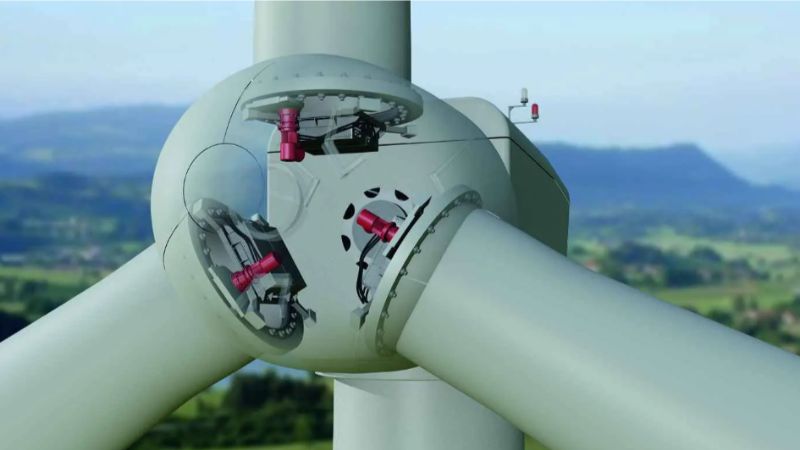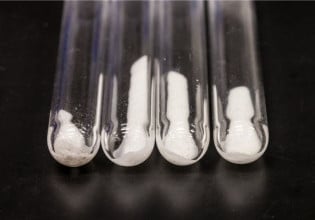Angling for Wind: Pitch Energy Modules Using Ultracapacitors
The installation of over 50,000 pitch energy modules signifies North America's most extensive ultracapacitor retrofit.
Wind turbines are increasingly important in harnessing renewable energy and providing sustainable power while minimizing environmental impact. However, optimizing their performance poses engineering challenges due to the need for precise control mechanisms, particularly regarding blade angle adjustments. This involves ensuring the power system has enough capacity to consistently deliver the required power for swift adjustments of blade angles.
Richardson Electronics has completed phase one of retrofitting ultracapacitor-based pitch energy modules (PEM) in North America. This article reviews the need to innovate wind turbine pitch control technology and explores how Richardson Electronics provides a solution.
Richardson’s PEM for wind turbines. Image used courtesy of Richardson Electronics
Exploring Pitch Energy Modules for Wind Turbines
Among all renewable energy sources, wind energy emerges as the cheapest and most rapidly expanding form, with over 350,000 wind turbines operational worldwide. In 2021, 93.6 GW of new installations increased cumulative wind power capacity worldwide to 837 GW, marking a 12% yearly growth. The Global Wind Report 2022 forecasts 557 GW of new capacity in the next five years, making it 110 GW of annual addition until 2026.
Three independent electromechanical propulsion units manipulate the rotor blades of pitch-controlled wind turbines to regulate power output. The electronic controller continuously monitors turbine power output. If it exceeds rated power, it commands the blade pitch mechanism to adjust blade angles, optimizing aerodynamic efficiency and reducing drive train stress.
Independent electro-mechanical propulsion units. Image courtesy of Nidec
An electrical pitch system primarily comprises pitch drives (actuators), an inverter, and pitch control. Additionally, batteries in the pitch control system of wind turbines serve as backup energy storage devices, ensuring the system's functionality during grid failures or emergencies. They provide power to drive the pitch mechanism, adjusting the rotor blade angles to optimize turbine performance. However, batteries have inherent limitations, such as limited energy density and degraded performance at high temperatures, which may necessitate frequent replacements, maintenance, or additional space requirements.
Therefore, to incorporate this energy seamlessly into the grid, advancements in PEMs are necessary for grid stability and wind turbines’ integrity.
Richardson’s Advancements in Ultracapacitors
In a recent development, Richardson Electronics unlocked a milestone in renewable energy by installing over 50,000 ULTRA3000 PEMs. According to the company, it is North America's largest retrofit of ultracapacitors for PEMs.
The ULTRA3000 PEM is an ultracapacitor-based replacement for General Electric (GE) wind turbine pitch system batteries, compatible with GE 20 & 30 Nm pitch systems. The PEM communicates directly with the GE controller and manages energy to adjust blade angles for safe and optimal wind turbine operation. With a maximum current rating of 2100A, a lifetime exceeding 15 years, and over 1 million charge-discharge cycles, the devices are engineered to ensure reliable operation with reduced maintenance and improved turbine reliability.
Richardson’s ULTRA3000 PEM. Image courtesy of LinkedIn
The development’s key highlight is replacing batteries with ultracapacitors as the power source. Batteries do meet the crucial needs of pitch system power sources, which demand rapid bursts of power for rotor blade adjustments across countless cycles. On the other hand, ultracapacitors are capable of rapid discharges and devoid of moving components, offering a straightforward, solid-state, and exceptionally rugged solution to address short-term discrepancies between available and required power.
The ULTRA3000 technology acts as a drop-in replacement for lead-acid batteries in electric pitch systems, offering a longer lifespan and reduced environmental impact. This installation is estimated to eliminate 250,000 toxic lead-acid batteries, save 3,300 tons of carbon dioxide (CO2), and reduce wind turbine owners' maintenance costs by millions of dollars.
Richardson and Renewable Energy
Richardson Electronics plans to exhibit its ultracapacitor PEMs and additional product offerings for wind turbine platforms from September 24 to 27, 2024, at the WindEnergy Hamburg Event in Hamburg, Germany. By eliminating toxic lead-acid batteries and reducing CO2 emissions, their PEMs could play a major role in the global adoption of wind power in the renewable energy sector.









